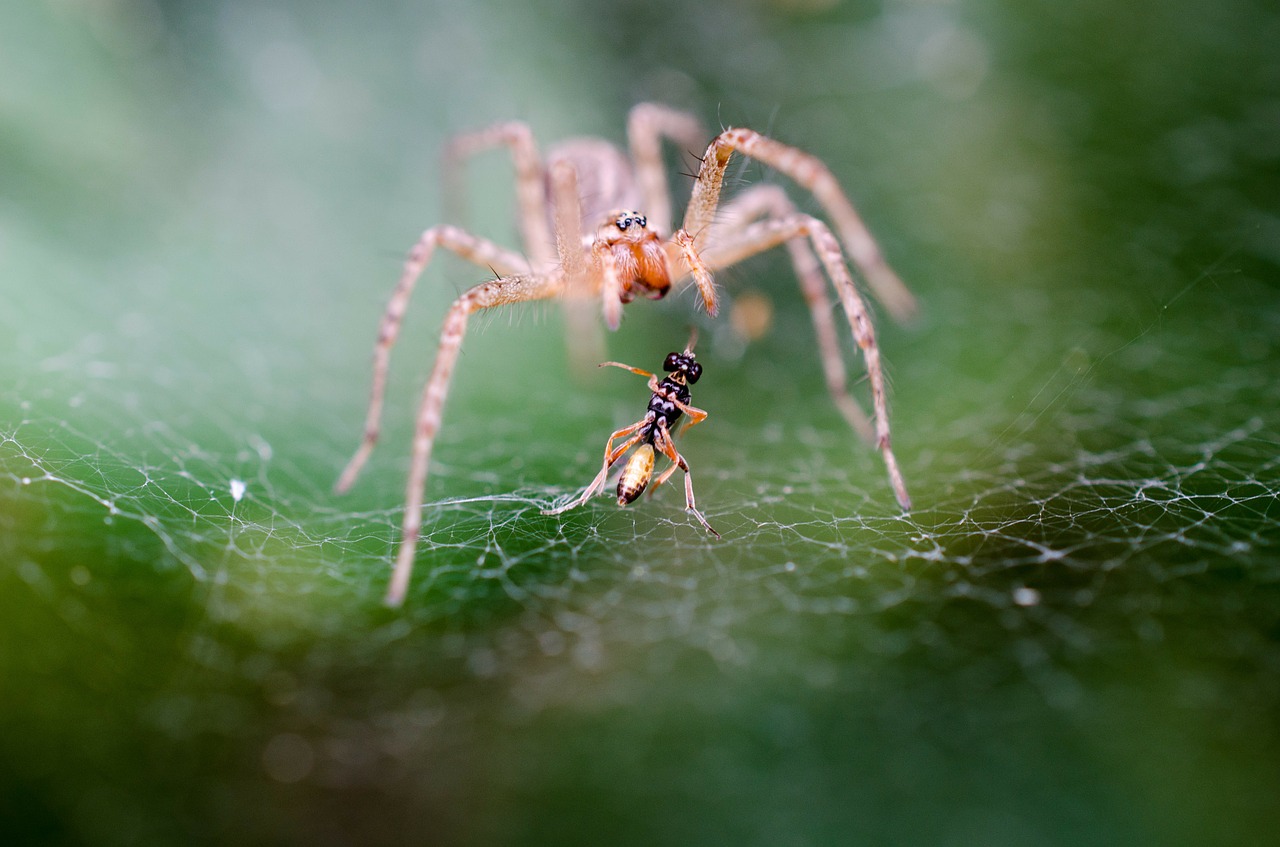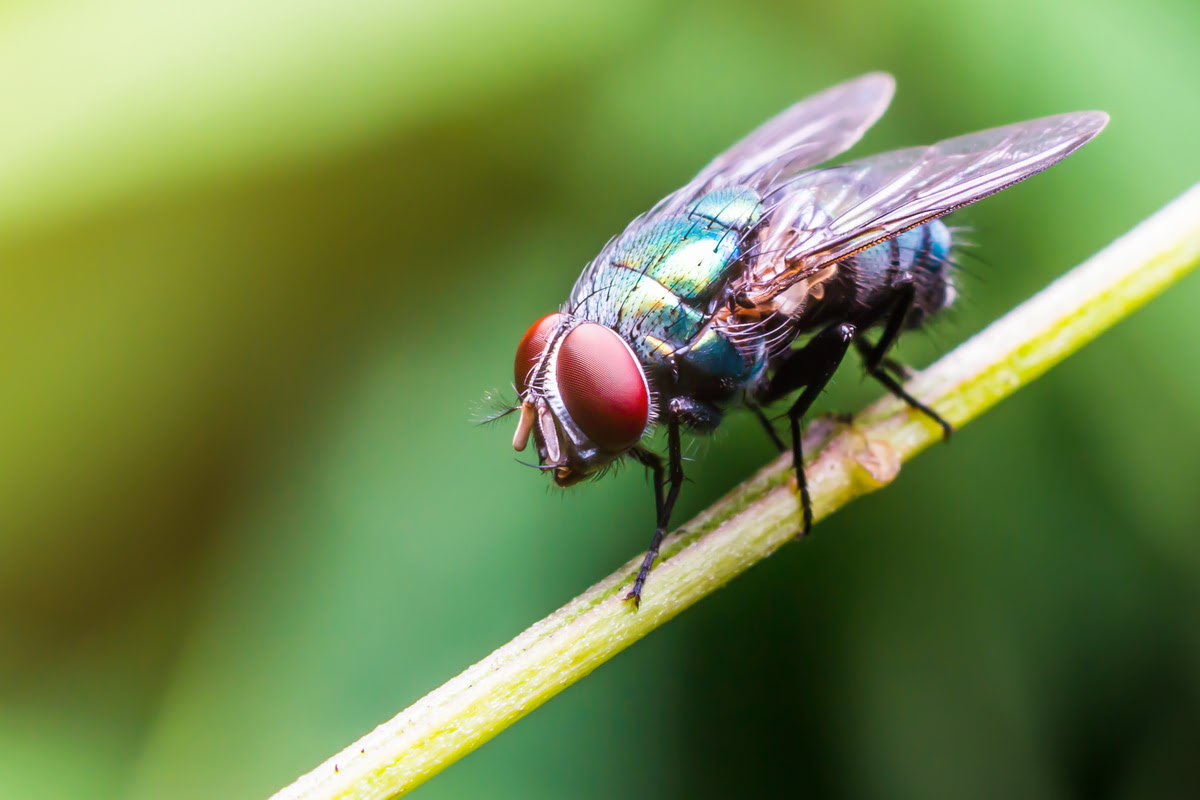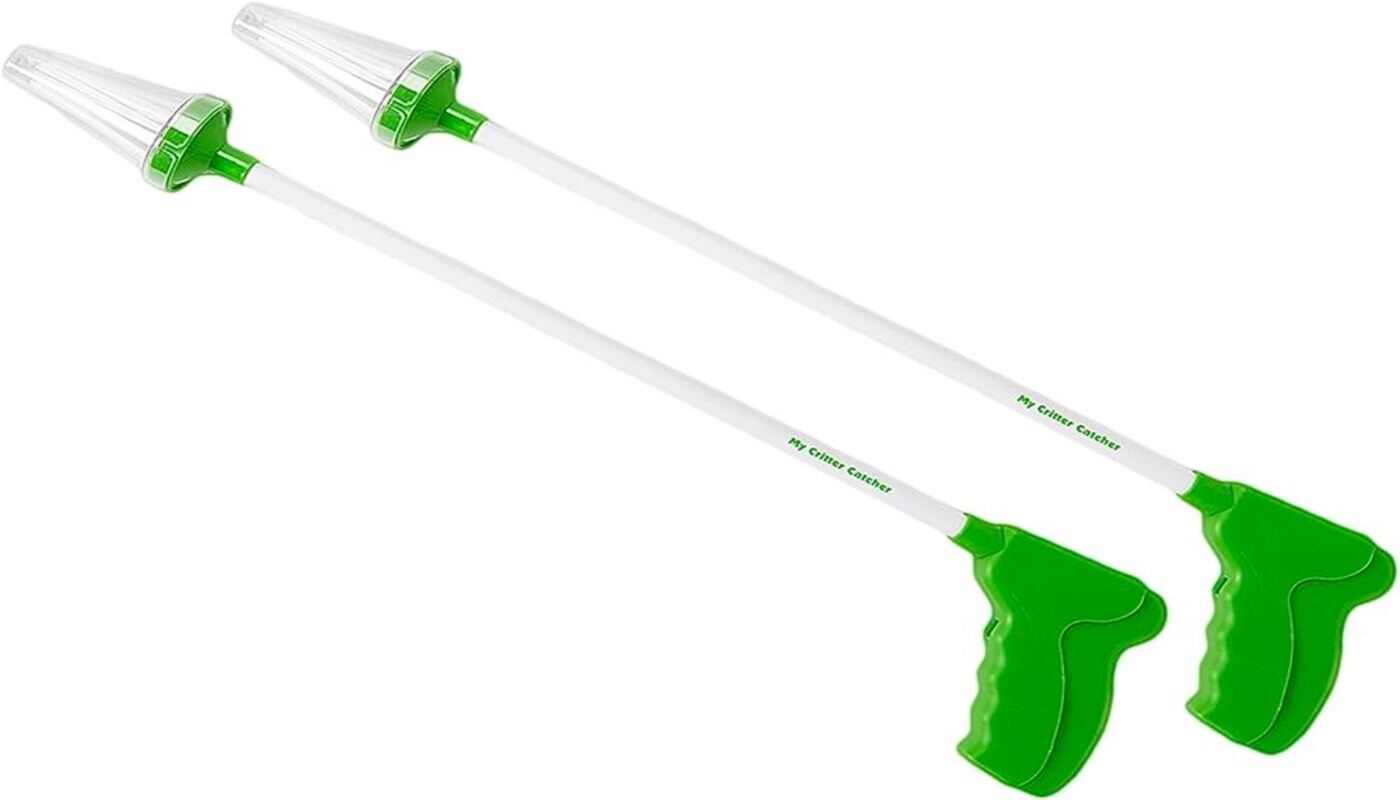Home>Gardening News and Trends>Latest News>How Are Spiders And Insects Different?


Latest News
How Are Spiders And Insects Different?
Modified: January 22, 2024
Discover the latest news on how spiders and insects differ. Explore their unique characteristics and understand the fascinating world of these remarkable creatures.
(Many of the links in this article redirect to a specific reviewed product. Your purchase of these products through affiliate links helps to generate commission for Chicagolandgardening.com, at no extra cost. Learn more)
Table of Contents
Introduction
Spiders and insects are often grouped together as creepy-crawlies, but they actually belong to different taxonomic groups. While they share some common characteristics, there are distinct differences that set them apart. Understanding the contrast between spiders and insects can help us appreciate the vast diversity of the animal kingdom.
Spiders are members of the arachnid class, which also includes scorpions, ticks, and mites. In contrast, insects belong to the insect class, making them the largest group of animals on Earth. Both spiders and insects play crucial roles in various ecosystems and exhibit fascinating behavior.
One of the most noticeable distinctions between spiders and insects lies in their physical characteristics. Spiders typically have eight legs, which springs to mind when we think of them, while insects have six. The legs of spiders are often longer and more slender compared to the robust legs of insects. Additionally, spiders have a two-part body with a distinct cephalothorax and abdomen, while insects have a three-part body comprised of the head, thorax, and abdomen.
Another distinguishing feature is the number of body segments. Spiders have two main body segments, whereas insects have three. This segmentation is evident in the thorax region for insects, which houses the wings and legs. Spiders lack wings, but their specialized silk-producing structures called spinnerets compensate for this absence.
Antennae are another distinguishing factor between spiders and insects. Insects possess antennae, which serve as sensory organs. These antennae aid in detecting specific signals, such as pheromones or vibrations. Spiders, on the other hand, lack antennae, relying on their other sensory organs, like the hairs on their bodies and legs, to navigate their surroundings.
Perhaps one of the most visually striking differences between spiders and insects is the presence of wings. Insects are known for their ability to fly, thanks to their well-developed wings. These wings allow insects to explore vast territories, search for mates, and escape predators. Spiders, on the other hand, do not possess wings and rely solely on their other physiological adaptations and natural silk to navigate their habitats.
Physical Characteristics
Spiders and insects exhibit distinct physical characteristics that differentiate them from each other. These features encompass various aspects, including the number of legs, body structure, number of body segments, antennae, and wings.
The most recognizable feature is the number of legs. Spiders typically have eight legs, which are attached to their cephalothorax. These legs are often long and slender, enabling spiders to move swiftly and navigate complex terrain with agility. In contrast, insects have six legs, attached to their thorax. The legs of insects are generally shorter and sturdier, allowing them to support their body weight efficiently during locomotion.
Another notable distinction lies in the body structure. Spiders have a two-part body, consisting of the cephalothorax and abdomen. The cephalothorax, also known as the prosoma, contains the spider’s eyes, mouthparts, and legs. It serves as the primary locomotive and sensory region. The abdomen, or opisthosoma, houses vital organs such as the reproductive system, silk glands, and digestive system. In contrast, insects have a three-part body structure, comprising the head, thorax, and abdomen. The head contains the insect’s sensory organs, including the eyes, mouthparts, and antennae. The thorax, located in the middle section, houses the wings and legs. Lastly, the abdomen contains most of the internal organs.
One key difference in body segmentation is the number of body segments. Spiders typically have two main body segments, the cephalothorax and abdomen. The cephalothorax is further divided into the cephalic and thoracic regions. Insects, on the other hand, have three body segments – the head, thorax, and abdomen. The thorax of insects consists of three segments, each bearing a pair of legs. This segmentation provides insects with greater flexibility and mobility during movement.
Antennae also play a role in distinguishing spiders from insects. Insects have antennae, which are highly sensitive sensory structures. These antennae help insects detect various environmental cues, including pheromones, vibrations, and changes in temperature. The length, shape, and structure of the antennae can vary among different species of insects and play a crucial role in their survival and reproduction. Spiders, in contrast, lack antennae. Instead, they rely on specialized hairs on their bodies and legs to sense their surroundings and perceive potential threats or prey.
Wings are another prominent feature that separates spiders and insects. Insects are well-known for their ability to fly, thanks to their wings. Wings provide insects with the freedom to explore vast territories, search for mates, and escape predators. The wings of insects are usually transparent and delicate, supported by a network of veins. Some insects have wings that are covered in colorful scales, enhancing their beauty and aiding in species identification. In contrast, spiders do not possess wings and are predominantly ground-dwelling or arboreal. However, they have evolved other physiological adaptations and behaviors, such as ballooning, to disperse and explore new habitats.
Number of Legs
The number of legs is one of the most noticeable differences between spiders and insects. Spiders are known for their eight legs, which are a defining characteristic of the arachnid class. These long and slender legs are attached to the cephalothorax, allowing spiders to move with agility and grace. Each leg is equipped with specialized structures, such as spines, claws, and sensory hairs, which aid in various functions, including walking, capturing prey, and navigating their surroundings.
In contrast, insects have six legs, located on their thorax. These legs are generally shorter and sturdier compared to those of spiders. The number and design of the legs can vary among different insect species, depending on their specific adaptations and habitats. The structure of insect legs can be highly diverse, ranging from stout and powerful legs adapted for jumping or digging, to slender and delicate legs designed for delicate maneuvers or gripping onto surfaces.
The legs of spiders and insects serve different purposes and exhibit different adaptations. Spider legs are primarily used for walking and climbing. The slender nature of spider legs allows them to navigate intricate webs and move effortlessly through tight spaces. Additionally, the legs of spiders contain specialized hairs, known as trichobothria, which detect even the slightest vibrations in the environment.
Insect legs, on the other hand, are adapted for a wider array of functions. In addition to walking and climbing, insect legs are often involved in specialized tasks such as grasping, digging, jumping, and swimming, depending on the specific needs of the species. For instance, grasshoppers and fleas have highly developed hind legs that enable them to execute powerful jumps, while beetles possess strong and robust legs that aid in digging and burrowing.
Both the number and structure of legs have been crucial in shaping the evolutionary adaptations and ecological niche of spiders and insects. The additional pair of legs in spiders provides them with greater stability and maneuverability, allowing them to capture prey effectively and navigate complex environments. In contrast, the six legs of insects provide a balance between stability and versatility, enabling them to adapt to diverse habitats and fulfill their various ecological roles.
While spiders and insects may have different leg configurations, their ability to utilize these appendages efficiently and adapt to different environments has contributed to their long-standing success and vast species diversity.
Body Structure
The body structure of spiders and insects is another defining characteristic that sets them apart. While both belong to the same larger group of arthropods, they exhibit distinct anatomical arrangements that reflect their unique evolutionary adaptations.
Spiders have a two-part body structure, consisting of the cephalothorax and abdomen. The cephalothorax, also known as the prosoma, is a merged structure that houses vital organs such as the brain, digestive system, and reproductive organs. It is composed of the fused head and thorax regions. The head region contains the spider’s sensory organs, including the eyes, mouthparts, and, in some species, venomous fangs. The legs of spiders are attached to the cephalothorax, enabling precise movement and providing stability during hunting and web construction.
The abdomen, also known as the opisthosoma, is the posterior part of the spider’s body. It hosts essential structures such as the silk glands, digestive system, respiratory organs, and reproductive organs. The abdomen is usually soft and flexible, allowing spiders to expand their bodies to accommodate prey or adjust the flow of silk threads during web spinning.
Insects, on the other hand, have a three-part body structure, composed of the head, thorax, and abdomen. The head region houses the sensory organs, including the eyes, antennae, and mouthparts. Insects have a wide variety of mouthparts, adapted for different feeding strategies such as chewing, sucking, or piercing. The antennae serve as highly sensitive sensory organs, allowing insects to detect pheromones, vibrations, and changes in their environment.
The thorax is located in the middle section of the insect’s body and is composed of three segments. Each segment bears a pair of legs, and the second and third segments may also have wings. The wings of insects, when present, are attached to the thorax and serve as essential adaptations for flight. Insects have evolved various types of wings, including membranous wings, elytra (hardened forewings), or modified wing cases. These wings provide insects with the ability to escape predators, search for mates, and explore diverse habitats.
The abdomen of insects contains many internal organs, such as the digestive system, reproductive organs, and respiratory organs (usually in the form of tiny tubes called tracheae). The abdomen may also have external features, such as sensory structures or specialized appendages for defense or locomotion, depending on the insect species.
The distinct body structure of spiders and insects reflects their different evolutionary trajectories and ecological adaptations. Spiders’ two-part body provides them with the advantage of flexible movement and efficient web-spinning capabilities. In contrast, insects’ three-part body structure allows for a greater diversity of specialized mouthparts, wings, and other adaptations that have contributed to their success and proliferation in various habitats worldwide.
Number of Body Segments
The number of body segments is another characteristic that distinguishes spiders from insects. Spiders typically have two main body segments, while insects have three.
Spiders have a two-segmented body structure consisting of the cephalothorax and abdomen. The cephalothorax, also known as the prosoma, is the anterior segment that houses the head and thoracic regions. This fused structure contains the spider’s vital organs, including the brain, digestive system, reproductive organs, and sensory organs such as the eyes and mouthparts. The cephalothorax provides a sturdy base for the spider’s eight legs, allowing for precise movement and effective hunting.
The abdomen, or opisthosoma, is the posterior segment of the spider’s body. It contains essential structures like the silk glands, respiratory organs, digestive system, and reproductive organs. The abdomen is usually soft and flexible, allowing spiders to expand or contract it as needed for various functions. For example, it can stretch to accommodate prey or adjust the flow of silk threads during web construction.
In contrast, insects have a three-segmented body structure consisting of the head, thorax, and abdomen. The head, located at the anterior end, contains sensory organs such as the eyes, antennae, and mouthparts. The antennae serve as highly sensitive sensory organs, detecting pheromones, vibrations, and changes in the environment.
The thorax is the middle segment of the insect’s body and is composed of three distinct segments: the prothorax, mesothorax, and metathorax. Each thoracic segment bears a pair of legs, resulting in a total of six legs for insects. Additionally, some insects have wings attached to the thorax. Insects have evolved a wide range of wing types, including membranous wings, hardened forewings (elytra), or modified wing cases, which have played a significant role in their ability to fly and explore diverse habitats.
The abdomen, located at the posterior end of the insect’s body, contains many internal organs, such as the digestive system, reproductive organs, and respiratory organs (usually in the form of tiny tubes called tracheae or spiracles). The abdomen may also have external features, like sensory structures or specialized appendages, depending on the insect species.
The difference in the number of body segments between spiders and insects reflects their evolutionary divergence and adaptation to different ecological niches. Spiders with their two-segmented body offer flexibility and efficiency in hunting and web-building, while insects with their three-segmented body possess a greater diversity of specialized mouthparts, wings, and other adaptations that have contributed to their remarkable success and abundance in various habitats across the globe.
Antennae
Another distinctive feature that sets spiders and insects apart is the presence or absence of antennae. While insects possess antennae, spiders do not have these sensory appendages.
Antennae are highly specialized structures found on the heads of insects. They serve as sensory organs, playing a crucial role in detecting and interpreting different signals from the environment. The antennae of insects are covered in sensory receptors, which enable them to detect various cues such as pheromones, vibrations, air currents, and changes in temperature.
The length, shape, and structure of antennae can vary significantly among different insect species. Some have short and stubby antennae, while others possess long and filamentous ones. The specific design of the antennae may reflect the ecological niche and specific adaptations of the insects. For example, butterflies and moths have long, slender antennae that aid in detecting pheromones secreted by potential mates. In contrast, beetles often have shorter antennae that are clubbed or serrated.
Antennae play various roles in the life of an insect. They are involved in communication, helping individuals recognize members of their own species and detect potential mates. Antennae also provide important sensory information about the surrounding environment, allowing insects to navigate, locate food sources, and avoid predators. Additionally, the antennae can assist in species recognition and social interactions within insect colonies or communities.
Spiders, however, lack antennae. Instead, they rely on other sensory organs to perceive their surroundings. Spiders possess tiny sensory hairs, called trichobothria, located on their bodies and legs. These hairs are highly sensitive to vibrations in the air, enabling spiders to detect the presence of prey or potential threats. Spiders may also have specialized sensory structures, such as slit sensilla, which aid in detecting airborne chemical cues.
While spiders lack antennae, they have evolved other remarkable adaptations to compensate for this absence. For instance, spiders possess multiple pairs of eyes that provide them with excellent vision, allowing them to detect movement and perceive their surroundings with great acuity. This visual sense complements their sensory hairs and other tactile organs, ensuring spiders are well-equipped to detect prey, avoid predators, and navigate their environments.
In summary, the presence of antennae in insects and their absence in spiders is a significant distinction between these two groups. Antennae play a vital role in the sensory perception and communication of insects, allowing them to navigate their environment, locate resources, and engage in social interactions. Spiders, on the other hand, rely on other sensory structures, such as trichobothria and eyes, to achieve similar sensory functions. The diverse adaptations of both spiders and insects highlight the remarkable evolutionary strategies that have allowed them to thrive in their respective ecological niches.
Wings
One of the most striking differences between spiders and insects lies in the presence or absence of wings. Insects have evolved the ability to fly, thanks to their well-developed wings, whereas spiders do not possess wings.
Insects exhibit a tremendous diversity of wing types, reflecting their adaptations to various environments and lifestyles. Wings are typically membranous structures supported by a network of veins, which provide rigidity and structural integrity. Some insects, such as houseflies and bees, have two pairs of wings, known as the forewings and hindwings. These wings are often transparent or translucent, allowing light to pass through. Other insects, such as beetles, have forewings modified into hardened structures called elytra, which protect the delicate hindwings and serve as protective covers when the insect is at rest. Additionally, there are insects like butterflies and moths that have scale-covered wings, giving them vibrant colors and intricate patterns.
The ability of insects to fly has provided them with many advantages. Flight allows insects to explore vast territories, locate resources, and find suitable mates. It also enables them to escape from predators and environmental hazards. Some insects have even evolved impressive aerial acrobatics, such as the precise hovering of hummingbirds or the swift twists and turns of dragonflies.
Spiders, on the other hand, do not possess wings. While they lack the ability to fly, spiders have evolved other remarkable adaptations for movement and dispersal. Instead of wings, spiders produce silk, which they use for various purposes. Silk enables spiders to disperse through a process known as ballooning, where they release strands of silk into the air and are carried by the wind to new locations. Spiders can also use silk to create draglines, which act as safety lines when they move or hunt in challenging terrain, such as on vertical surfaces or between branches.
The absence of wings in spiders is compensated by other physiological adaptations. Spiders have well-developed muscles that allow them to move quickly and with precision. They also possess specialized leg structures that provide stability and grip on different surfaces. These adaptations are crucial for spiders’ hunting strategies, as they rely on agility, speed, and the use of silk to capture their prey. While they cannot fly, spiders have managed to thrive and occupy diverse habitats around the world.
In summary, the presence of wings in insects and their absence in spiders is a significant distinction between these two groups. Wings have enabled insects to conquer the sky, providing them with the ability to explore new territories, locate resources, and engage in complex flight behaviors. Spiders, on the other hand, have evolved unique adaptations such as silk production and specialized leg structures to compensate for the lack of wings, allowing them to excel in hunting and survival strategies on the ground and in various habitats.
Eating Habits
Spiders and insects have distinct eating habits, reflecting their divergent evolutionary adaptations and ecological roles within their respective habitats.
Spiders are carnivorous predators, feeding primarily on other arthropods, such as insects. They employ a variety of hunting strategies to capture their prey. Some spiders, like orb-weaving spiders, build intricate webs to ensnare flying insects. These spiders use their silk to construct an intricate pattern of sticky threads, which immobilize unsuspecting prey that becomes entangled within the web. Other spiders, known as ambush predators, rely on stealth and speed to capture their prey. These spiders camouflage themselves within their environment, waiting patiently for an opportunity to strike when an insect comes within reach.
Once captured, spiders use their venomous fangs to inject toxins into their prey. These toxins immobilize or kill the prey, making it easier for the spider to consume its meal. Spiders possess specialized mouthparts, adapted for piercing and sucking, allowing them to extract the liquid nutrients from their prey’s body. After feeding, spiders may discard any remaining indigestible parts by wrapping them in silk and throwing them away.
Insects, on the other hand, display a wide range of feeding habits due to their vast diversity of species. While many insects are herbivorous, feeding on plant material such as leaves, stems, or nectar, others are carnivorous or omnivorous, consuming both plant matter and other organisms.
Herbivorous insects have evolved a variety of strategies to feed on plants. Some insects have specialized mouthparts, such as mandibles or chewing mouthparts, allowing them to chew and consume plant matter. Others have adapted to piercing and sucking mouthparts, such as those found in mosquitoes or aphids, which allow them to extract sap or plant juices. These insects may also play vital roles in pollination, transferring pollen from one plant to another as they feed on nectar or collect pollen.
Carnivorous insects, similar to spiders, are predatory and feed on other animals. They may capture prey using various techniques, such as active hunting, traps, or ambush strategies. Insects such as mantises, dragonflies, and assassin bugs are known for their predatory behavior. They employ stealth, speed, or specialized appendages to capture and consume other insects or small animals.
Omnivorous insects have a more varied diet, consuming both plant material and other organisms. Examples of omnivorous insects include ants, which scavenge for both plant matter and animal remains, and some beetles that feed on fruits, decaying matter, and small insects.
Overall, the eating habits of spiders and insects reflect their evolutionary adaptations and ecological roles within the food web. Spiders are specialized predators, with diverse hunting strategies and venomous mechanisms to capture and consume other arthropods. In contrast, insects have a diverse range of feeding habits, including herbivory, carnivory, and omnivory, reflecting their ability to adapt to various food sources and niches.
Silk Production
One of the most fascinating adaptations of spiders is their ability to produce silk, a remarkable material with diverse functions. Silk production is unique to spiders and sets them apart from insects.
Spiders possess specialized silk glands located in their abdomen. These glands produce a liquid protein solution, which is then extruded through spinnerets. Spinnerets are small structures at the posterior end of the spider’s abdomen that allow the liquid silk to solidify into threads. The complexity and number of spinnerets can vary among different spider species, influencing the characteristics of the silk produced.
Spiders utilize silk for various purposes. The most well-known use of silk is in web construction. Web-building spiders are capable of spinning intricate, geometrically precise webs that serve as traps for capturing prey. The architecture and design of spider webs can vary significantly among species, reflecting their unique hunting strategies. Some construct orb webs, characterized by concentric circles connected by radial threads. Others create irregular tangle webs or funnel-shaped webs.
Spider silk possesses remarkable mechanical properties, including high tensile strength, elasticity, and toughness. These properties allow spider webs to withstand considerable forces, such as capturing struggling prey or resisting wind and rain. The unique composition and molecular structure of spider silk contribute to its strength and flexibility, making it one of the strongest natural materials known.
Aside from web construction, spiders utilize silk for additional purposes. Some spiders produce silk draglines, which they use as safety lines during movement or when navigating challenging terrain. These draglines allow spiders to move with agility and avoid potential falls or dangers. Other spiders construct egg sacs or retreats from silk to provide shelter and protection for their offspring or themselves.
Notably, silk production and its characteristics can vary among different spider species. Some spiders produce multiple types of silk with specialized functions. For example, certain orb-weaving spiders create sticky silk to capture prey and non-sticky silk for structural support. Some spiders even produce silk with specialized properties for prey wrapping or mating purposes.
The ability to produce silk provides spiders with an evolutionary advantage, allowing them to adapt to a wide range of habitats and hunting strategies. Silk plays a crucial role in the survival, reproduction, and ecological interactions of spiders, enabling them to capture prey efficiently, protect their offspring, and navigate their environments successfully.
In contrast, insects, including those that produce silk-like materials such as silkworms, do not possess the same level of complexity and diversity in silk production as spiders. The silk fibers produced by silkworms come from modified salivary glands and are primarily used in cocoon construction for protection during pupation. While insects may have similar functional materials, the dynamic and adaptive properties of spider silk make it unparalleled in the animal kingdom.
In summary, silk production is a unique and fascinating adaptation of spiders. Through specialized silk glands and spinnerets, spiders create threads with incredible strength and versatility. Silk serves various functions for spiders, including web construction, draglines, protection, and carrying out essential life processes. This extraordinary ability enhances spiders’ survival and success in their environments, setting them apart from insects and showcasing the remarkable diversity of adaptations in the natural world.
Reproduction
The reproductive strategies of spiders and insects vary significantly, reflecting their divergent evolutionary adaptations and life histories.
Spiders exhibit a wide range of reproductive behaviors. Typically, male spiders use specialized appendages called pedipalps to transfer sperm to the female during mating. The pedipalps of male spiders are modified in structure and function, varying among species. Some male spiders construct elaborate courtship rituals to attract females, involving intricate dances or vibrations on the female’s web. Once the mating ritual is successfully performed, the male spider deposits sperm onto a specialized structure known as the sperm web. He then loads the sperm onto his pedipalps and transfers it to the female’s reproductive organs. This process ensures fertilization of the female’s eggs.
In some spider species, mating involves a higher level of complexity and risk. Some female spiders exhibit extreme sexual cannibalism, where the female consumes the male after or even during mating. This behavior is believed to provide the female with additional nutrition or reduce the competition between potential offspring. However, not all spider species engage in this behavior, and some males have developed various strategies to avoid being cannibalized, such as mating from a distance or providing nuptial gifts to the female.
Insects, on the other hand, have a wide array of reproductive strategies due to their vast diversity. In most insect species, mating involves direct copulation between the male and the female. Like spiders, male insects typically have specialized reproductive structures that transfer sperm to the female. These structures can vary greatly among different insect groups, from simple appendages to complex endophallus structures.
The timing and frequency of reproduction also differ between spiders and insects. Insects generally have shorter reproductive lifespans and shorter generation times. Many insects reproduce multiple times or have multiple broods in a single season, taking advantage of favorable environmental conditions for egg-laying and offspring development. In contrast, spiders often have longer lifespans, and some species reproduce only once or a few times during their lifetime.
Both spiders and insects exhibit a range of reproductive strategies to ensure the survival of their offspring. Female spiders often produce egg sacs, which contain hundreds to thousands of eggs. These egg sacs are protected and guarded by the female until they hatch, after which the spiderlings disperse. Some female spiders construct intricate silk retreats to provide a safe environment for their egg sacs and developing offspring.
Insects have a diverse array of reproductive structures and behaviors as well. Some insects deposit eggs directly onto suitable surfaces, while others construct elaborate nests or engage in parental care. For instance, some bees build nests with multiple brood cells, in which they lay eggs and provide food for their developing larvae. Ants and termites have highly complex social structures, with specialized individuals responsible for reproducing and caring for offspring.
The reproductive strategies of spiders and insects reflect their different life histories, ecological niches, and reproductive constraints. Both groups have evolved a variety of adaptations to ensure the survival and success of their offspring, highlighting the remarkable diversity of reproductive behaviors in the animal kingdom.
Conclusion
Spiders and insects belong to different taxonomic groups and possess distinct characteristics that set them apart in the animal kingdom. Understanding the differences between these two groups provides valuable insights into their evolutionary adaptations, ecological roles, and overall diversity.
From physical characteristics to feeding habits, spiders and insects exhibit fascinating variations. Spiders typically have eight legs, a two-part body structure (cephalothorax and abdomen), and lack wings and antennae. In contrast, insects have six legs, a three-part body structure (head, thorax, and abdomen), and possess wings and antennae.
Eating habits also distinguish spiders from insects. Spiders are carnivorous predators, using venomous fangs to capture and consume other arthropods. Insects, on the other hand, display a range of feeding habits, including herbivory, carnivory, and omnivory, reflecting their diverse adaptations and ecological roles.
Another significant difference lies in silk production. Spiders produce silk through specialized glands and spinnerets, utilizing it for building intricate webs, creating draglines, protecting offspring with egg sacs, and more. In contrast, insects, including the silk-producing silkworms, do not possess the same complexity and diversity in silk production as spiders.
The reproductive strategies of spiders and insects also vary, with spiders engaging in behaviors such as courtship rituals, sexual cannibalism, and producing egg sacs, while insects have a wide array of reproductive structures and behaviors, including copulation, multiple broods, and parental care.
In conclusion, the differences between spiders and insects extend beyond their physical appearance. Their variations in body structure, feeding habits, silk production, and reproductive strategies reflect their diverse evolutionary paths, ecological roles, and survival strategies. Both spiders and insects have evolved unique adaptations that have allowed them to thrive in different habitats and fulfill essential ecological functions. Exploring the distinctions between these two groups enhances our appreciation for the magnificent diversity and complexity of the natural world.






